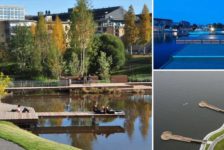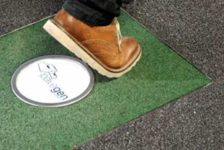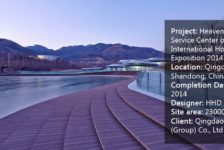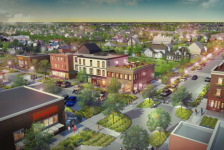The Lyon River Bank by IN SITU Architectes Paysagistes. In Lyon, France, the east bank, often referred to as the left bank, of the river has undergone a transformation that has taken the former ports from a riverside car park, to a varied public space that will facilitate relaxation and socialising and encourage both city dwellers and wider Lyon residents to use sustainable transport options. The 10ha site covers a stretch along the river of approximately 5km. The ‘Berges de Rhône’ (Banks of the Rhône) development was a project undertaken by the local authority who launched an architecture competition with the assistance of the Greater Lyon Open Spaces Department (Grand Lyon) and its project-management team.
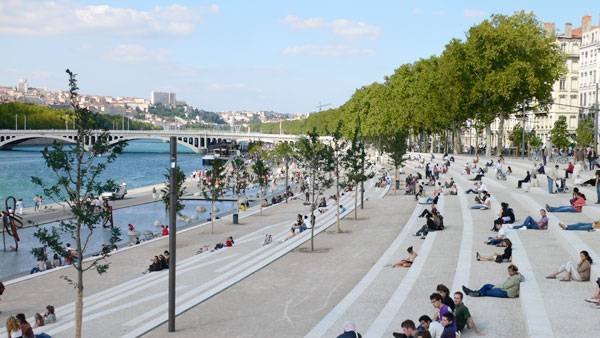
The Lyon River Bank. Credit: IN SITU Architectes Paysagistes.
Following this consultation, a team comprising landscape architects from
IN SITU Architectes Paysagistes, the architect
Françoise-Hélène Jourda, and lighting designers from
Coup D’éclat was appointed at the beginning of 2003. The winning design proposed a continuous line of public space and nature running between the ‘Tete d’or and Gerland parks.
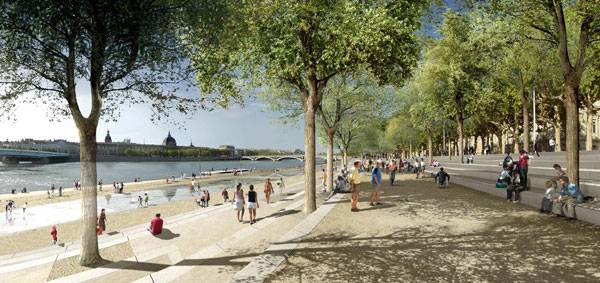
The winning proposal. The Lyon River Bank. Credit: IN SITU Architectes Paysagistes.

The Lyon River Bank. Credit: IN SITU Architectes Paysagistes.
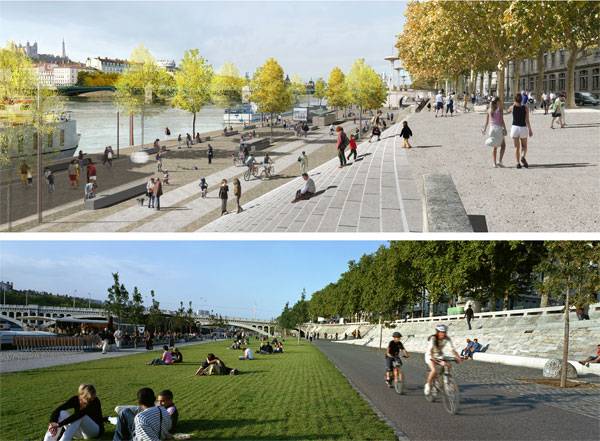
Visualisations of The Lyon River Bank. Credit: IN SITU Architectes Paysagistes.
The design stage which completed in 2005, proposed no car parking at all in a statement of intent to reconnect people with the river and with nature, to reclaim the public space and facilitate an uninterrupted route along the river’s edge via a range of sustainable transport methods side by side – most notably walking and cycling. Instead, motorists who did not transfer to the sustainable transport options would use designated, safer, multi-story car parks.
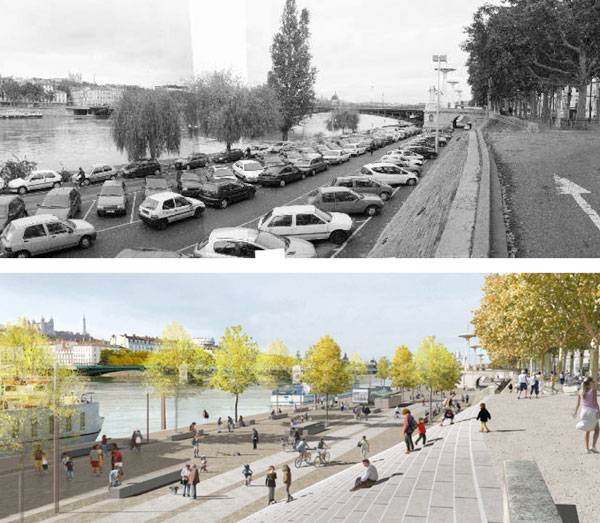
Before and after – The Lyon River Bank. Credit: IN SITU Architectes Paysagistes.
A key component of the design process was community consultation, which engaged the local community, sought their input and ideas and ensured the expectations of both local residents and council were managed to avoid irreconcilable differences from the outset. Construction then began in 2005 and was completed in 2007. Once opened to the public, the project was deemed an immediate success and is now a key part of the day-to-day lives of Lyon’s residents.
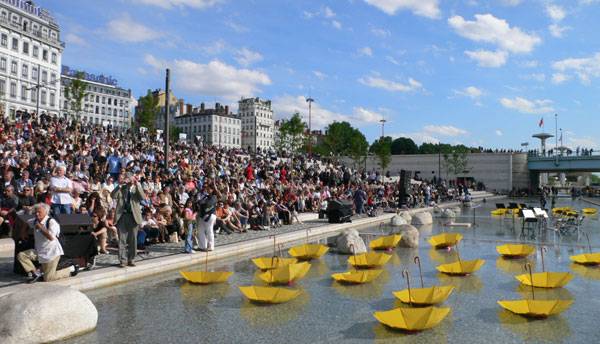
Residents enjoying an art installation – The Lyon River Bank. Credit: IN SITU Architectes Paysagistes.
The site is also home to part of a European cycle path – the Vélo-route Léman-Mer – which runs all the way from Lake Geneva to the Mediterranean coast, so it was fitting to upgrade Lyon’s section of the route to reflect the City’s economic, social and historical significance and ensure a continuous, safe and picturesque riverside experience for cyclists using the route.

Cyclist enjoying the Lyon River Bank. Credit: IN SITU Architectes Paysagistes.
What The River Bank Offers
At the centre of the development, the Terrasses de la Guillotière – a brand-new stepped open space created as part of this project – offers a distinctive city-centre setting with unique views over the river and the UNESCO world heritage site formed by Lyon’s historic centre.
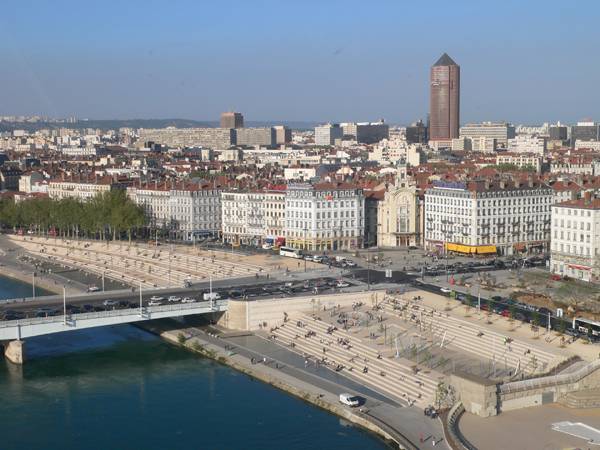
The Lyon River Bank. Credit: IN SITU Architectes Paysagistes.
Project expenditure is
approximately €44m provided through council funding. This includes the build costs and also the provision for events spaces on the upper quays. The linear route changes in its offering along its course. Some points are 5m wide, others 75m, creating a very different feel which is described as being ‘more natural’ upstream and downstream, and less so in the more urban areas.
Related Articles:
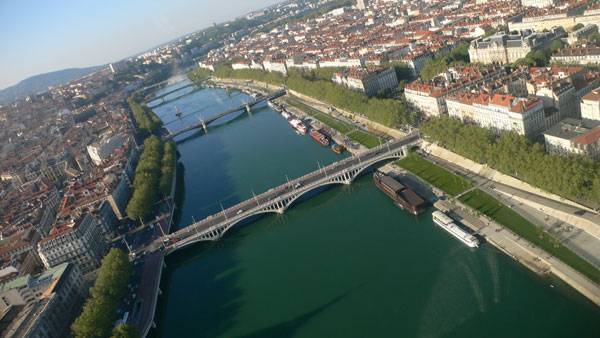
The Lyon River Bank. Credit: IN SITU Architectes Paysagistes.
Refreshment bars, information points, cycle hiring points and buildings for fishermen will activate certain points, whilst in other areas ‘islands of grasses’ and significant tree plantings have provided more private garden type spaces for the barge residents up river. Whilst a large lawn area sits in front of the restaurant barges in the central section.
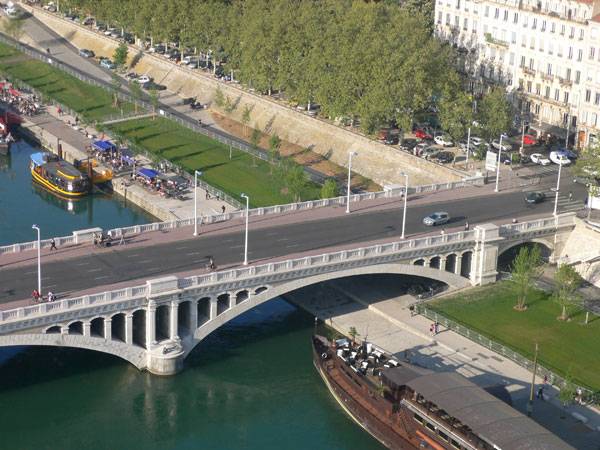
The Lyon River Bank. Credit: IN SITU Architectes Paysagistes.
Near the Rhone pool, the addition of skate bowls and a sports court defines the sport area. Nearby, 3 lines of Oak and Elm trees define a long raised esplanade ideal for markets and second-hand trading. Downstream, the previously hard surfaced quay has been naturalised to provide a botanical walk, showcasing the types of vegetation found along the Rhone.
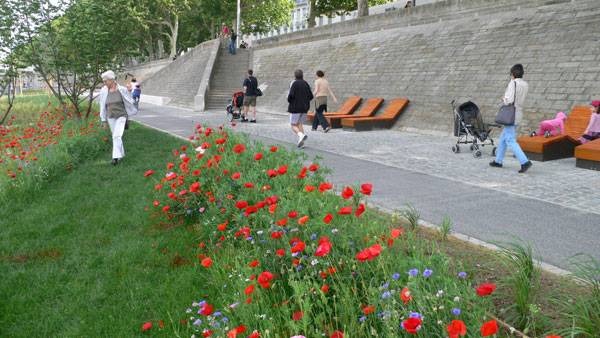
The Lyon River Bank. Credit: IN SITU Architectes Paysagistes.
The design also includes a strategy for the maintenance and development of the project into the future, key to the success of any project as seen in Courthouse Pioneer Square.
Following a Cultural Trend Many of our cities grew around rivers – vital for fresh water and transporting goods by ship. As cities developed, so did shipping, and with it many river banks became home to large industrial ports. Changes in processes have left some of these areas dilapidated, but cities are also now recognising the importance of riverbanks and rivers as recreational spaces for their growing populations. Research has after all shown that as a species, we are attracted to the water, and therefore the area around the water should be attractive to complement it, right?
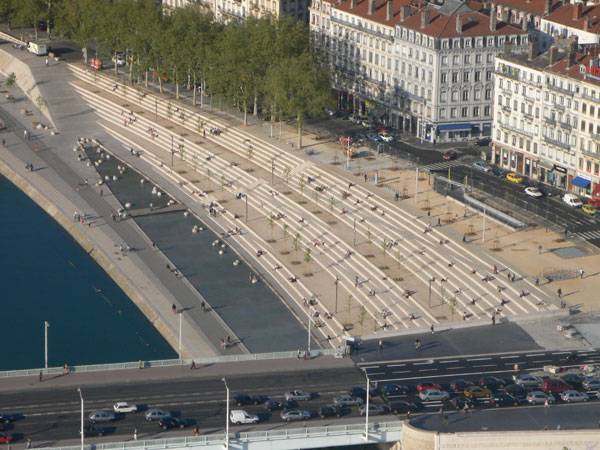
The Lyon River Bank. Credit: IN SITU Architectes Paysagistes.
Riverside developments are happening all the time, all over the world – just look at
London’s southbank, M
elbourne’s southbank,
Bordeaux’s west river bank. These are just a few examples of where industrial parts of the city, have been redeveloped to create central areas for city development – providing new jobs, accommodation and recreation options to city residents. But recognition that quality public space, and green space, is required as cities grow, is leading the way that these such projects are designed and delivered, in a way that we may not have seen so much in the past.

The Lyon River Bank. Credit: IN SITU Architectes Paysagistes.
It’s almost like we are undoing our development of city river banks – reducing the concrete and allowing people to reconnect with the water through quality riverside public spaces. It’s fantastic to see, and long may it continue.
Recommended Reading:
Article written by Simon Vive. Return to Homepage
Published in Blog
















